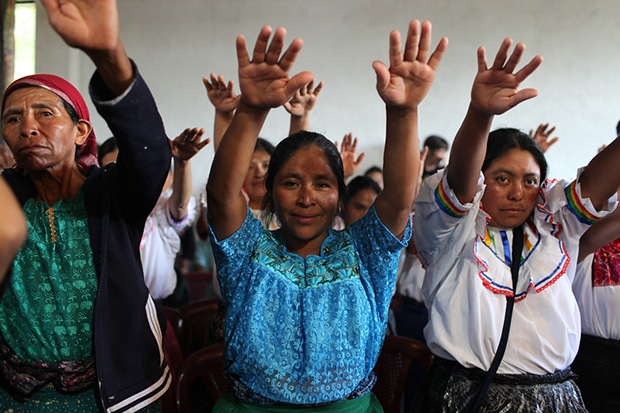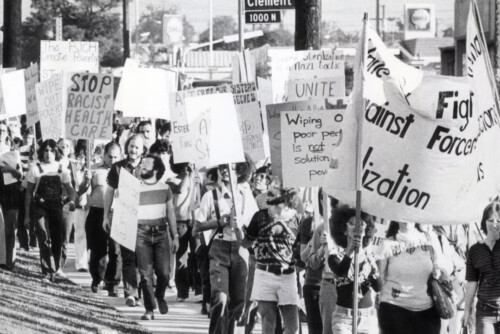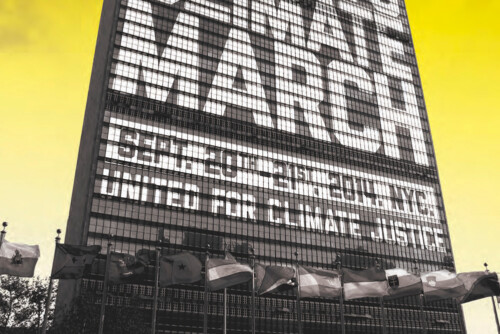Counting for Life
Yet in the face of death, “98% said no,” has now become a fact of life, used in the national and international press and by antimining activists. And, little by little, as town after town holds referenda, another fact takes on life, a single number begins to emerge from adding up all the nos, so that in 2008, Aniseto López and Arturo Mendez, representing San Miguel at the Goldcorp shareholder’s meeting in Vancouver Canada, could say that “half a million people” reject the presence of Goldcorp,24 and by 2013, it was close to a million.
The biotech of consultas is “going viral,” linking counting ever more closely to life. The people of Concepción Tutuapa San Marcos, a 100 percent Maya-Mam town, organized a consulta comunitaria in 2007 to decide if they wanted mining in their municipality. As was becoming the custom (this was the fourteenth), outside observers were asked to attend as both legitimizers and to help avert possible disruptions. The former because, somehow, rural indigenous folks counting themselves, even with most of the technologies of audit culture in place—ledgers where names sit clearly next to identification document numbers, next to signatures or thumbprints, and highly mediated with local photographers and videographers studiously documenting the crowds of people, the discussions, the decisions, and the culminating lines of people waiting to sign—is still not considered reliable enough. They don’t quite qualify. So outsiders were stationed in each of the town’s 64 hamlets.
Camilo Salvado was one such observer. A young ladino man from the capital representing Plataforma Agraria, a broad alliance of academics, unions, and peasant and progressive religious organizations, he told me how impressed he was with people’s consciousness. They were incredibly aware. They knew exactly what was happening in nearby San Miguel Ixtahuacán with the open-pit gold mine. They knew about the streams drying up and the poisoned wells. They understood how filtration works, how the cyanide and other chemicals used to remove gold from rocks leach into the underground aquifers, and how much mountain is lost to get one ounce of gold (one 18 carat ring creates 20 tons of contaminated waste rock). In his report, he wrote: one gentleman said, “Everything we do to the earth gets passed on to the water. That is the sickness they have in San Miguel.”25 Without electricity, and deep in the mountains, most of their information comes from word of mouth and community radio stations heard on receivers run off car batteries, although several people had gone to see the San Miguel mine for themselves. But even so, not everyone was against it. In fact, the mayor of the town was in favor of mining concessions, and the local development committees had had to work behind his back to organize the consulta. Just weeks before it was to be held, the mayor was caught in a corruption scheme and kicked out of office, smoothing the way for the count to be carried out.
In the hamlet of El Mirador, where Camilo was stationed, over 200 people, children and grown-ups, came to the consulta assembly, and they talked in Mam for more than three hours. There was a lot of disagreement and an intense process of discussing different options. Some thought it would bring development to the forgotten area, roads, schools, health clinics, but, most importantly, jobs. Several men brought up the fact that a license had already been conceded under the auspices of the Free Trade Agreement (CAFTA), so they doubted whether a consulta could stop it. People wondered whether technology didn’t exist that could remove the gold without harming the rivers. They talked about poverty and the difficulties of surviving. Maybe there was a way to make this work?
What decided it was the eloquence of an elderly man who said: “We want to be peaceful here, we do not want this horror to come here, those foreigners to come here and make holes in our mother earth, that will dry up our trees, that will dry up our water […] We don’t know how the government decided, we don’t know how the government gave them permission to do this, but this land doesn’t belong to the government. This land belongs to our ancestors.”26

This sealed it, and all 200 residents of the hamlet of El Mirador, children and adults, raised their hands to be counted—100 percent against. Leaders had insisted that children be there, as it is their future at stake, and because their little bodies are more vulnerable to toxins. It’s also understood as a civics lesson, so they learn about the politics. Many rural people, especially women, don’t have government-issued identification papers so, like children, don’t count for the state (an important audience for the sums—state-istics—they are producing). In El Mirador, only adults with identification papers could sign the Act, reducing the no votes to 98. In the whole municipality, over 20,000 people participated in the assemblies and raised their hands against the mine, but fewer than 10,000 counted “officially.” The national press undercut the count even more dramatically, reporting that only 400 countable people participated. In spreadsheets charting the consultas, however, Concepción Tutuapa appears with 11,300 no votes and 0 yes votes. (As I’ll explore below, such apparent imprecision is not only the domain of stereotypically “innumerate Indians” or the sedimented racism in outsider reporting.)
Salvado contrasts the living democracy he experienced in the community assembly with the democracia muerta of national politics, where top-down decision-making by elites is backed up by the remilitarization of the countryside under the guise of drug interdiction, and where private property and the “letter of the law” are more important than life itself. Echoing the people of El Mirador he insists, “the legitimacy of the consulta goes beyond any numeric question.”26
The quantification labors of the consulta included the work of organizing 20,000 people to show up on a specific date, with 64 outside observers willing to walk hours into the mountains to fulfill their role. After the count, elders from each hamlet went to town to submit the numbers and paperwork, and to witness the creation of an acta (legal document) that, reflecting those numbers, prohibits mining in their area. Those of us who fear the way numbers’ abstraction dis-qualifies may feel torn here. Getting the count—first 98, and then 11,300, and then each town across the country adding one to get to a national aggregate opposing mining—would seem to qualify as a political win. Those people, almost all of them poor, rural, and Maya—the historically discounted—now count. But the quality of those hours of discussion, the creative alternatives, the ground-level alternatives, are lost. The vote is “qualified,” in the sense of restricted, as so many people didn’t count in the ways that matter to the state.
In turn, a consultation is not simply counting people’s yeses or nos. For it to “count,” in the sense of having weight, of mattering, it needs legal infrastructure. What numbers represent appears clear-cut, but it is only meaningful within particular systems.27 Not unlike the women’s Mayan prayer in the Catholic church, such a frame has emerged from work and struggle, some of it global—via the International Labor Organization’s Convention 169 on the Rights of Indigenous and Tribal Peoples, some national—as in ratifying 169 and changing the Constitution and municipal codes to create the very form of the consulta.
And these labors have constituted a new terrain that Goldcorp has to play on. While publicly the company scoffs, claiming the consultas don’t count, they are fighting against them tooth and nail, both legally and extra-judicially. As the consultas began to spread through the indigenous highlands, mining interests tried more culturally astute hegemony work. In the eastern highlands, a transnational nickel company and the Guatemalan Ministry of Energy and Mines hired a respected aj’q’ij, or Mayan diviner, to do a ceremony asking permission of the Mother Earth to begin operations. Apparently she said yes.28 In Sipakapa, Goldcorp got a court injunction and sued the municipality for inconstitutionality before the consulta was even officially approved. Sipakapa prevailed in both cases and so, just beforehand, the company blanketed the hamlets with disinformation, saying the consulta had been postponed. Also to no avail. After “a delegation went down to the city to present it to the government,” Goldcorp continued to fight, taking its case all the way to Guatemala’s Supreme Court. After two years, caught between the constitution, with its vestiges of democratic guarantees, and the 1996 neoliberal laws, as well as the corporation-friendly Central American Free Trade Agreement (CAFTA), the court handed down a double bind: the consulta was legal but it was not binding. The community then took the case to the Inter-American Human Rights Court (IAHRC) of the OAS, where they won a major victory in May 2010. The court ordered suspension of mine activity to prevent irreparable harm to the life, physical integrity, and environment of indigenous communities.
- NISGUA (Network in Solidarity with the People of Guatemala) “Mining Expansion and the Communities that Say NO,” newsletter, 2008. Although many people were voting against their own local “mega-projects,” like dams or other mining concerns. [↩]
- Camilo Salvado, “Democracia, minería y luchas por el agua en territorio mam: consulta comunitaria en San Marcos,” AVANCSO working paper, n.d.: 8. [↩]
- Salvado n.d.: 10. [↩] [↩]
- Mary Poovey, A History of the Modern Fact: Problems of Knowledge in the Sciences of Wealth and Society, (Chicago: U of Chicago P, 1998). [↩]
- Patricia González, “Piden permiso a la tierra para explorar mina de niquel,” elPeriodico, 8 Jan. 2005. [↩]




